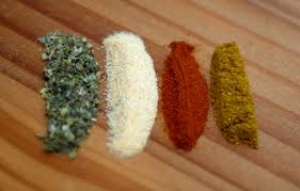Raw materials for Dairy cow feeds
Print This Page Feeding Rapeseed to Reduce Emissions and SFAs

Feeding milled rapeseed as a lipid and protein supplement for lactating dairy cows reduced methane production per day, per unit of dry matter intake and per unit of milk yield.
Some interesting results of a trial, carried out at the University of Reading, for environmentally conscious dairy producers.
The team of scientists, led by Les Crompton, found that every 1% of added lipid reduced methane emissions, relative to dry matter intake, by 2.5% and methane emission relative to milk yield by 7%.
“And feeding milled rapeseed decreased milk saturated fatty acids and increased cis-MUFA, while minimising milk trans-MUFA and could be used as part of an overall strategy to improve human health and food security,” Dr Crompton told delegates at this year’s British Society of Animal Science’s annual conference, held at the University of Nottingham.
With the aim of improving production efficiency, lipid has long been added to ruminant diets as an energy supplement, particularly for high yielding dairy cows in early or mid lactation. Manipulation of dietary fatty acid composition, with a view to altering milk fatty acid profile, has also received much interest. Most recently this has been in light of health issues arising from consumption of saturated fatty acids.
Current global efforts to reduce anthropogenic sources of greenhouse gas emissions has led to further interest in the effects of dietary lipids on methane emissions by ruminants. Previous work has also shown that feeding frequency can affect methane emission in dairy cows.
Dr Crompton’s team took four Holstein-Friesian dairy cows, in mid-lactation, which were randomly allocated to one of the four treatments. The control diet was formulated to provide a crude protein level of approximately 150 g/kg dry matter (DM) and was fed as a total mixed ration comprising a 50:50 mixture (on a DM basis) of forage:concentrate, while the forage consisted of a 75:25 blend (DM basis) of maize:grass silage.
The treatments consisted of the control diet fed twice daily (Con ×2), the control diet containing 35g/kgDM of lipid from milled rapeseed fed twice (Rape ×2) or once (Rape ×1) daily and the milled rapeseed diet with daily fluctuations in forage:concentrate ratio from 45:55 to 55:45 (while keeping the rapeseed at a constant proportion) fed once daily (Rape4/5 ×1).
Diets were formulated to be isoenergetic and isonitrogenous. Measurements of respiratory exchange, including methane production, in conjunction with total urine and faecal collection were obtained over four days during the final week of each period, when cows were housed in open-circuit respiration chambers. Milk fatty acid composition was measured and expressed as a weight percentage of total fatty acids.
“And we found that daily methane emission was reduced by all diets containing milled rapeseed compared to the control diet, with the largest decrease observed for the Rape ×1 treatment, which also tended to reduce dry matter intake,” said Dr Crompton.
“The average reduction in methane emission for the three milled rapeseed diets was 15%. Methane emissions per unit of dry matter intake was also decreased by feeding rapeseed, however, the reduction was only significant for the diets that were fed once daily,” he added.
Methane emissions per unit of milk yield were also reduced by feeding rapeseed, with an average decrease of 20%. Feeding rapeseed reduced the concentration of total saturated fatty acids in milk fat by approximately 17%.
























